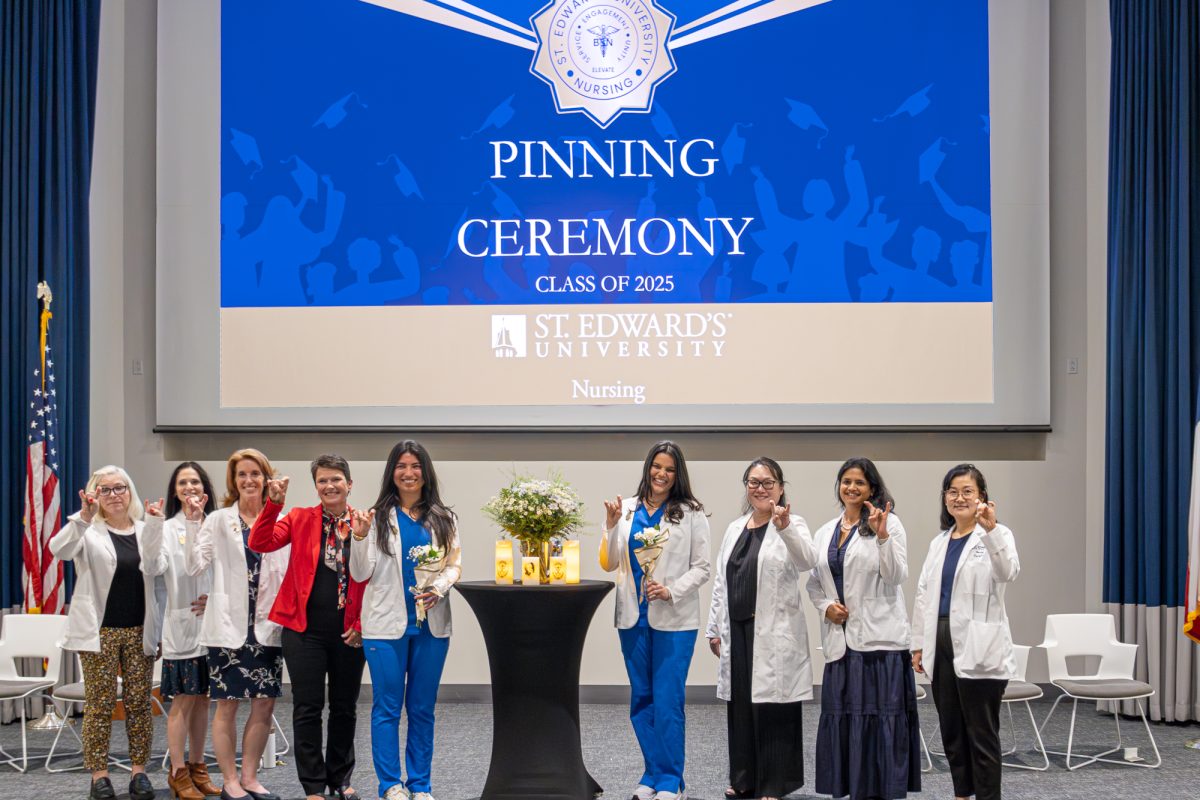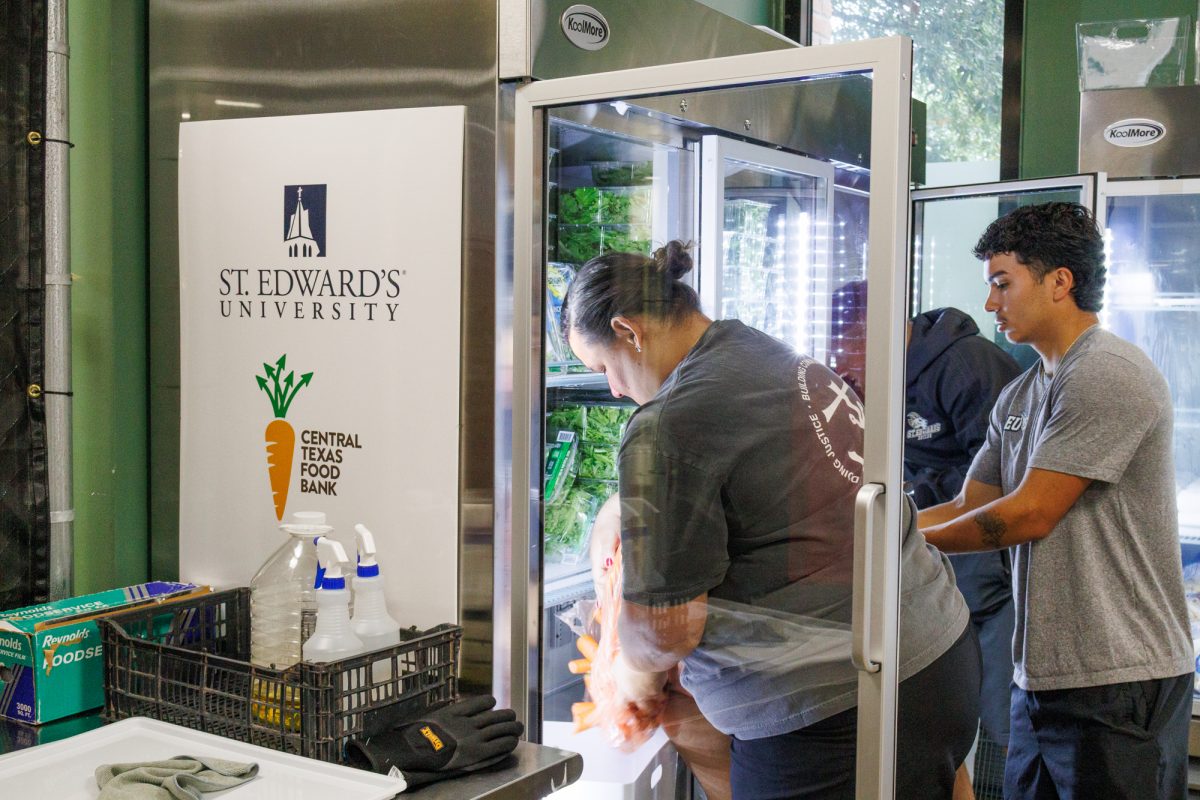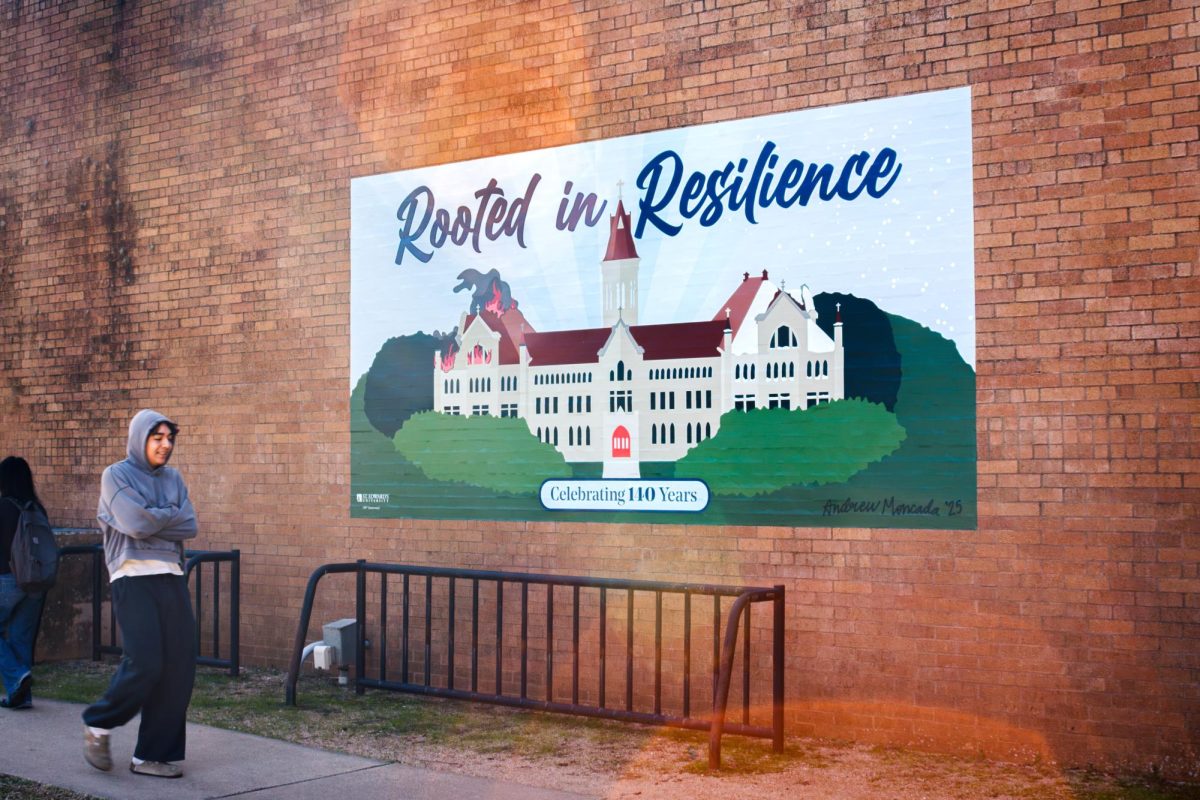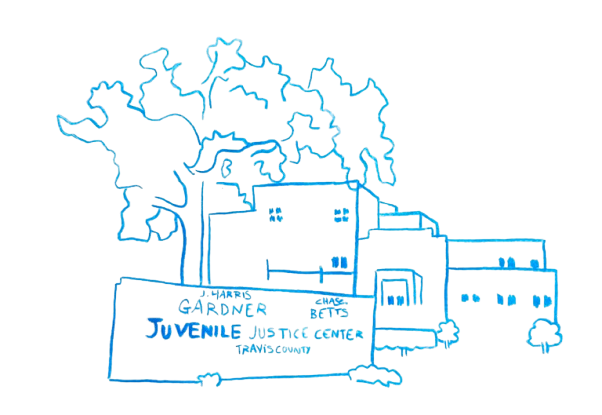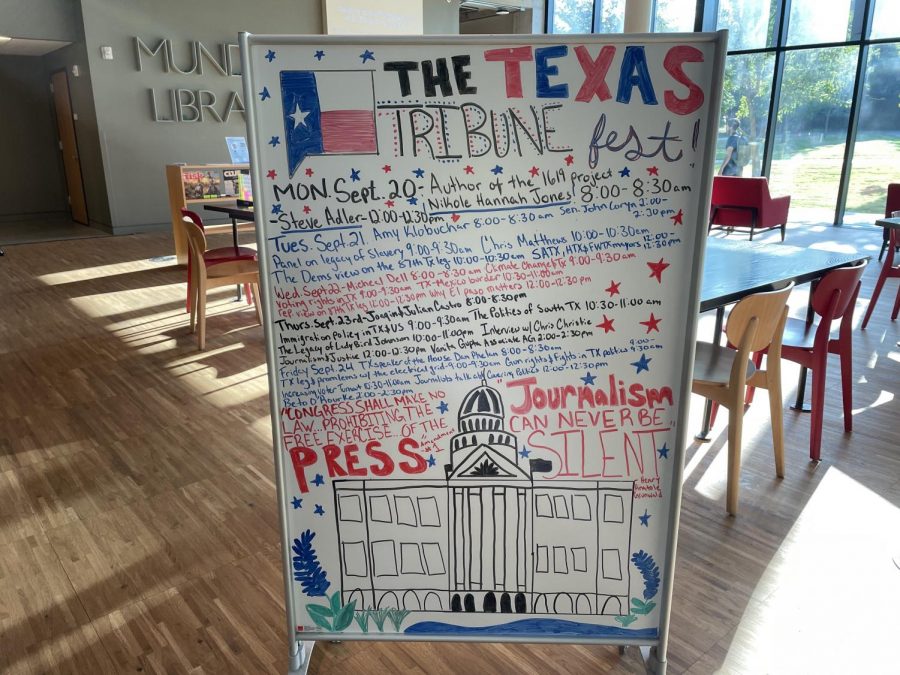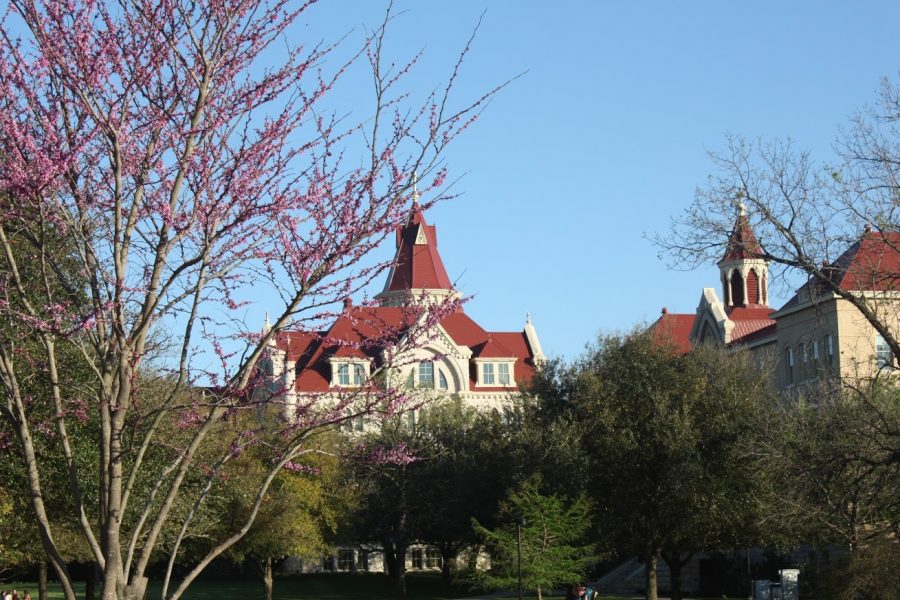Under the shade of trees in the St. Edward’s University food forest, Rachel Caldwell Hill, a Cherokee Nation citizen, held up ears of Cherokee White Eagle corn as the Saturday morning heat set in. Over 40 students, faculty and community members gathered ready to learn the nixtamalization process that turns corn into masa for tortillas.
Caldwell Hill demonstrated the various stages of nixtamalization, a traditional Mesoamerican process in which corn is treated with an alkaline solution to increase its nutritional value using the Cherokee White Eagle corn harvested in the campus Three Sisters Garden.
Attendees then participated in a shared communal feast, complete with homemade tortillas prepared that morning, pico de gallo, refried beans, nopales and buffalo meat from the Texas Tribal Buffalo Project.
“If you take care of it (corn), it will take care of you,” said Caldwell Hill, who is a board member for the Central Texas Cherokee Township, while sharing a Cherokee creation story about corn during the demonstration.
The celebration represents the latest milestone in a three-year partnership between St. Edward’s and the Cherokee Township. The partnership has established heirloom Cherokee corn varieties in the university’s food forest behind Teresa Hall. A Cherokee Nation grant for community outreach launched the partnership, which has grown into a model for Indigenous-academic collaboration.
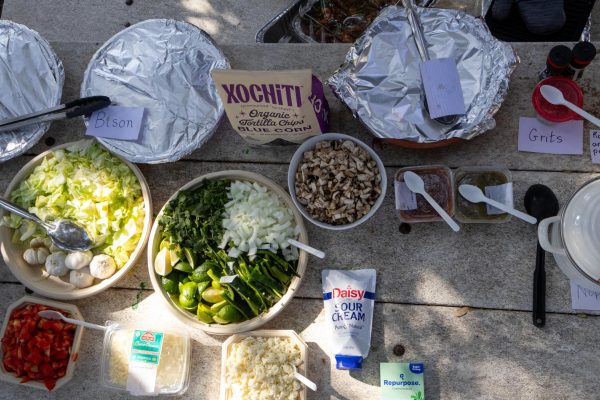
“St. Edward’s is an amazing partner of ours,” Caldwell Hill said. “They host our main three sisters program. So we do corn, beans and squash that are all Cherokee heirloom varietals. They’re really amazing stewards of that as well, especially just because not all of our members have access to land.”
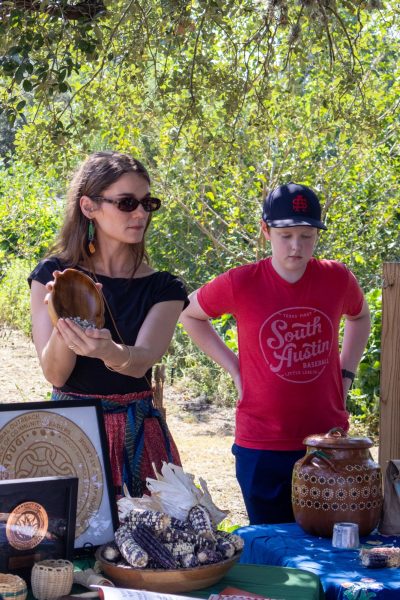
The Three Sisters method, which includes growing corn, beans and squash together, naturally enriches soil by allowing beans to fix nitrogen for future crops. Caldwell Hill explained that “all of this corn was fed from the nitrogen from last year’s beans. And all of the corn that we’re going to get next year was fed from this year’s crop.”
Amy Concilio, professor of environmental science and policy, said the event marks the beginning of a planned series focusing on the food forest’s bounty.
“A lot of students don’t even know it exists,” Concilio said of the food forest. “Even if they do know it exists, they might not know how to prepare the foods.”
The demonstration addressed both knowledge gaps and sustainability principles. Traditional nixtamalization breaks down corn’s hard outer coating, making nutrients more bioavailable, a process that transforms basic corn into what Caldwell Hill called a “superfood.”
“Nixtamaliization is essentially the chemical process in which we introduce call or lime,” Cadwell Hill said. “You introduce an alkaline solution, and what it does is it actually breaks down the hard outer coating of the shell.”
Students responded with curiosity. Miriam Crownover, a freshman environmental science and policy major, said she “didn’t know that there was (a) shell on the outside of the corn.”
Her roommate, Siena Beltran, a freshman nursing major, was impressed by the community turnout.
“Whenever I look around, it’s not students, it’s community,” Beltran said. “I wasn’t expecting that, but I’m not mad about it.”
The event drew participants from across campus, including an entire freshman seminar class and professors from multiple departments. Cherokee Township members and other community participants also attended.
For the Cherokee community in Texas, the corn project carries particular significance. Caldwell Hill noted that “we had Cherokee here in Texas before Texas was even actually a state” due to forced removals that began before the official 1838 Trail of Tears.
“We’re trying to think through what does it mean to live in this state in the light of all of these complications,” Caldwell Hill said. “And we know that food brings people together.”
The nixtamalization process also enables cross-cultural connections. As a Mesoamerican technique, it allows Cherokee corn to be transformed into masa for tortillas and tamales, bridging different Indigenous food traditions.
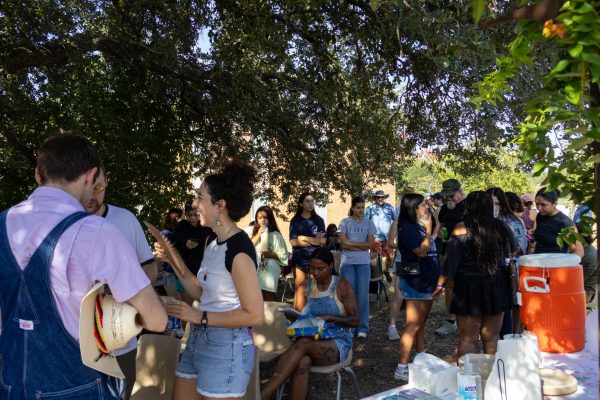
“When it comes to what does it mean to be Cherokee here in Texas, it’s caring for each other,” Caldwell Hill said. “It’s ‘deja ti.’ It means (to) treat each other with love, locate and find one another.”
From an environmental perspective, Concilio emphasized the lessons Indigenous practices offer to contemporary food systems.
“Traditional practices that Native Americans have used for generations were developed in harmony with the land,” Concilio said. “And a lot of the varieties of vegetables that are used have the long history with the land and with the climate and with the soils.”
The Cherokee White Eagle corn now growing on campus represents years of adaptation. Organizers originally sourced the varieties from Cherokee Nation seed banks in Oklahoma. The varieties have gradually acclimated to Texas growing conditions through the partnership.
Roy Johnson, campus sustainability coordinator and arborist, said student involvement has grown throughout the project’s cycles and that this summer, students helped plant Cherokee popcorn.
“We’re actually planting a Cherokee popcorn, which, fingers crossed, I think it should be ready somewhere around Halloween to actually make popcorn.” Johnson said. “It’s very nutritious.”
As Caldwell Hill put it, the collaboration demonstrates “how we can be a better partner to Indigenous groups” while showing that sustainable food systems require both ancient wisdom and contemporary community building.



